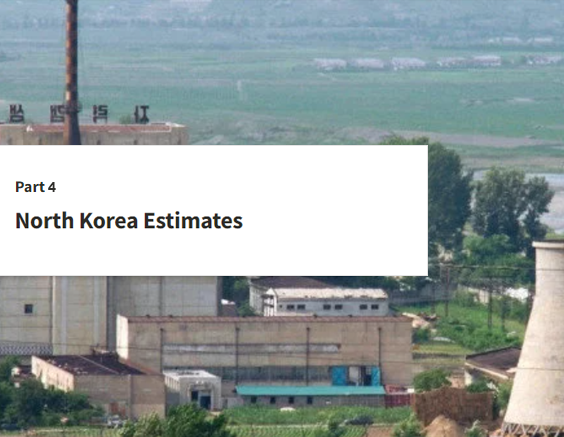Hinge Points: An Inside Look at North Korea’s Nuclear Program
- Arsenal Estimation
- Bomb Fuel
- Weaponization
- Delivery Systems
- Nuclear Estimates
- Further Reading

Nuclear Estimates
The history and details of North Korea’s production of nuclear materials as of 2016 was described by Hecker, Braun, and Lawrence. [1] The comprehensive history of North Korea’s nuclear program was presented by Hecker, Carlin, and Serbin in 2018. [2] This study tracked the interrelationship between the technical and political developments in a detailed narrative. Hinge Points describes the complex interplay between political and technical issues over the past 30 years that led to the threatening capabilities that North Korea can field today. [3] The estimates as of the end of 2021 are shown in Figure 7. North Korea has the capacity to add sufficient fissile materials annually for an additional six or so nuclear weapons. The bottom line is that Hecker estimates North Korea is able to reach all of South Korea and most of Japan with nuclear tipped missiles but is not yet able to reach the U.S. mainland.
Estimated nuclear capabilities as of end of 2021
Figure 7. Hecker’s estimates of North Korea’s nuclear and missile capabilities as of end of 2020. North Korea is believed to be able to produce sufficient fissile materials annually for six to seven additional bombs (one of plutonium and six of HEU). *Numbers based on amount of fuel available—may not all be weaponized.
| Nuclear Capability | December 2021 (Rough Estimates) |
|---|---|
|
|
Sources:
[1] Hecker, Siegfried S., Chaim Braun, and Chris Lawrence, “North Korea’s Stockpiles of Fissile Material,” Korea Observer Vol. 47, No. 4, Winter 2016. [2] Hecker, Siegfried S., Robert L. Carlin, and Elliot A. Serbin, “A Comprehensive History of North Korea’s Nuclear Program: 2018 Update,” The Center for International Security and Cooperation, Stanford University, February 11, 2019. https://cisac.fsi.stanford.edu/content/dprk-history-2018-update [3] Hecker, Siegfried S. with Elliot A. Serbin, Hinge Points: An Inside Look at North Korea’s Nuclear Program, Stanford University Press, January 2023.